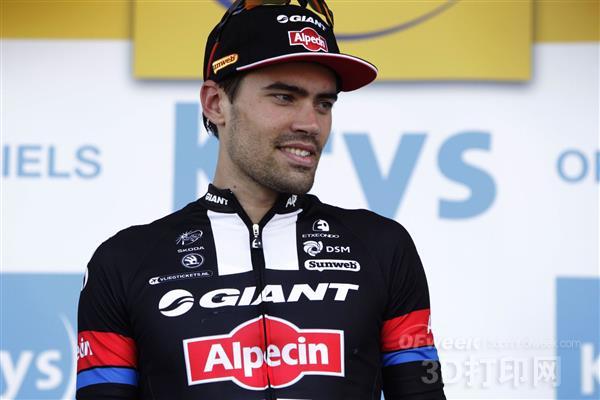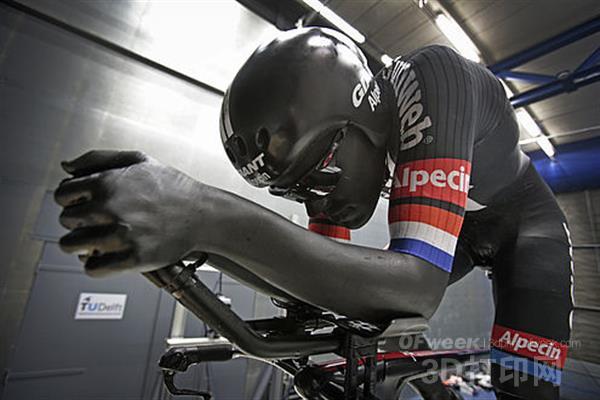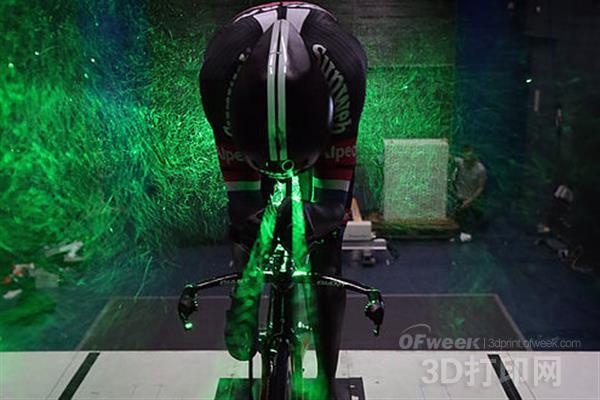Since the opening of the 103rd Tour de France Open on July 2nd, 2016 in Mont Saint-Michel, France, it has been getting better. From July 15th, the event entered the personal time trial stage. At this stage, you should pay attention to Dutch cyclist Tom Dumoulin, because this rising star is wearing a new bicycle dress with the help of 3D scanning and 3D printing technology .
This tight-fitting car was developed by the Giant-Alpecin team (the team where Dumoulin is located) in cooperation with Delft University of Technology (TU Delft). The aim is to bring some competition to professional cyclists in the competition. Advantage. It is important to know that in cycling, the outcome of the game often depends on a fraction of a second, so any form of advantage, such as more aerodynamic clothing, can be a decisive factor. According to China's 3D printing network, this customized suit is done in a completely new way. A team from TU Delft first performed a 3D scan of Dumoulin's body shape while riding a bicycle, and then 3D printed a life-size replica and tested a series of 3D printed mannequins in a wind tunnel. Materials and clothing design. Through this process, the researchers and the Giant-Alpecin team were able to design optimized tailored garments for Dumoulin.

The first step in this work is to perform a 3D scan of Dumoulin's body, which is necessary because athletes have their own training and competition arrangements and cannot participate in the development of the suit. To this end, the researchers found the 3D scanning company th3rd, which used a photogrammetric method to capture detailed and accurate scan data from the rider. The entire process involved capturing photos of Dumoulin from various angles using 150 digital SLR cameras. It only took about 30 minutes.
The next step is to 3D split all the data from the 3D scan to create a usable 3D model for Dumoulin's body. Dr. Jouke Verlinden from the TU Delft School of Industrial Design Engineering explained: “The key to this is how to use the data correctly, such as splitting files in a clever way: the so-called 3D segmentation. You should also Determining where in the scan data 3D printing accuracy is less important, then you can greatly reduce the amount of data you need in these places. If your goal is to make the entire model accurate to micron, then you will spend the time when printing the model Going too much time."

When the 3D model was completed, the research team began the 3D printing process. Of course, in order to create a cyclist's life-size model, they had to divide the entire object into 8 different parts and print them separately. The research team used several FDM 3D printers and spent a total of 50 hours.
To test different materials and suits, the mannequin was handed over to TU Delft's doctoral student Wouter Terra, who recorded a large number of wind tunnel tests. This material testing process is not as simple as imagined. Terra explained: “You will think that the fabric is smoother and produces less resistance. But it is not always the case – especially when we look at a round, blunt, non-streamlined shape, such as the body of a cyclist. When the airflow is around."

According to Terra, sometimes a ribbed surface may actually be more conducive to aerodynamic design because there are generally two types of resistance that work: friction creates resistance and pressure creates resistance. "Although the ribbed surface roughness leads to an increase in frictional resistance, the pressure resistance will drop significantly, eventually leading to a decrease in overall resistance," he continued. “The effective combination of rough and smooth surfaces on the suit can only reduce drag by 0.5 percentage points, but the advantage of this difference is enough to make a top ten driver win the championship.â€
The test clothing material was provided by cyclist clothing supplier Etxeondo, who wanted to know which material was most effective for different body parts in each game. Finally, they used a combination of smooth and textured materials to create a series of uniforms to be tested in the wind tunnel. The particle image velocity measurement technique (PIV) is used to map and measure the airflow to see which combination of materials provides the best results.

The suits selected by the above methods will eventually be worn on Dumoulin to participate in the most important Tour de France. The researchers hope that the garment will help Dumoulin increase the total game time by a few seconds (or a fraction of a second).
The R&D team said: "We have measured significant resistance differences between different materials - about 1%, which sounds like little difference. Actually it is not the case. It will lead to an hour-long game. The player saves about 10 seconds of hard-pressing. In addition, this advanced tights will undoubtedly add additional psychological incentives to Dumoulin, which will improve his overall performance. Of course, all this will be proved by the results of the competition. â€
hair curler
Ningbo Beilun Xuanfeng Molding Co., Ltd. , https://www.schelfern.com
